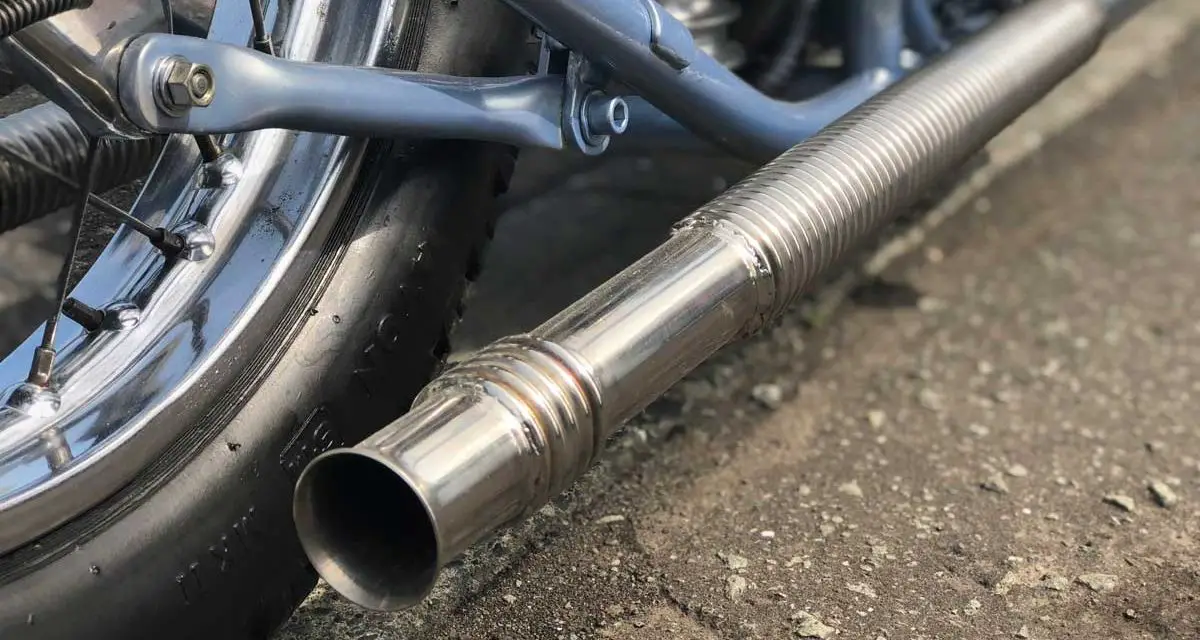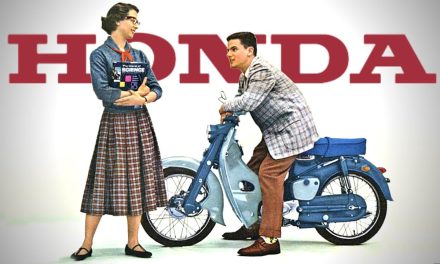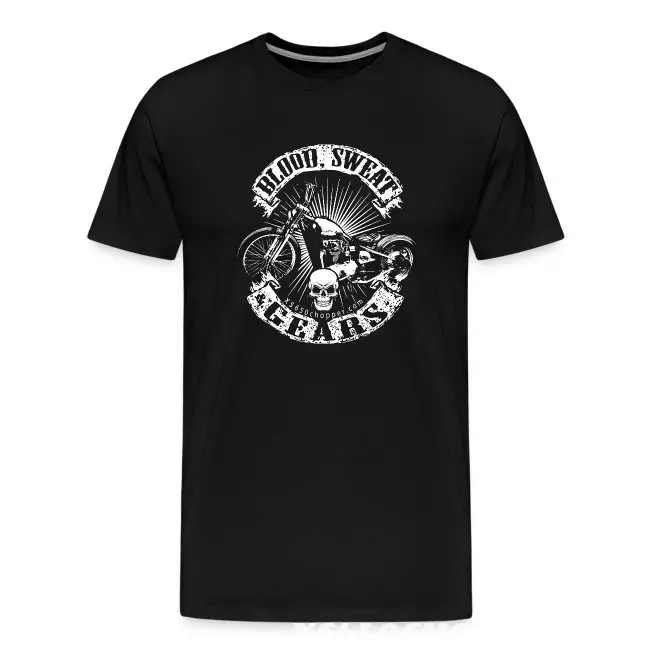An increasing number of people are opting for motorcycles nowadays because it is more efficient and powerful enough to travel long distances. It satisfies the thirst for adventure and is also cost-effective in the long run.
Despite the aforementioned benefits, some people still find it less efficient, especially because of its noise that is louder when compared to a car.
To further understand why motorcycles have to be loud, here are some frequently asked questions and their answers:
How Many Decibels is a Motorcycle?
Noises or sounds in general, are measured by decibels (dB). It is a unit of sound that is made on a logarithmic scale to measure the intensity of noise. Vehicles have different noise levels. Motorcycles normally have a riding noise at 85-95 dB at speeds up to 35 mph. Cars have 64 dB at the same speed.
However, there isn’t an actual universal measurement of how much dB is acceptable for motorcycles and other vehicles. This is for the reason that different states or countries regulate how noisy motorcycles or vehicles should be within their jurisdiction. Environmental concerns and the elimination of serious noise pollution are the key aspects of these rules.
In the US, the regulation passed by the Department of Motor Vehicles (DMV) which took effect on June 1, 1979, and is still implemented nowadays, states that motorcycles produced from 1979 cannot go over 84 dB when traveling more than 35 mph on a highway. When traveling on a highway soft site at a speed of 35 mph or less, motorcycles should be maintained at 78 dB. If you’re traveling at above 35 mp on the same site, the maximum noise level should be 82 dB.
On the other hand, if you are traveling on a highway hard site at a speed of 35 mph or less, the required noise level is 80 dB at most. When you decide to go over 35 mph on the same highway, your noise level should be at 84 dB maximum.
A soft site is a part of the road with grass or other non-concrete surface covers. Whereas a hard site has concrete, asphalt, packed dirt, and gravel surfaces.
In the UK, the noise levels should be maintained from a minimum of 75 dB to a maximum of 80 dB, with an extra additional 6dB for mechanical noise. The Motor Cycle Noise Act of 1987 also prohibits the supply of motorcycle exhaust systems and silencers that cause too much noise and for connected purposes.
If you want to perform alterations on your mufflers, you must check your local ordinances for laws and regulations.
Exceeding these required noise levels could be detected by radar systems or Sound Level Monitors (SLM) on the road and is considered to be an offense. Motorcyclists who don’t abide by these standards incur fines. To avoid this, stay educated and take responsibility as a motorcyclist.
Do motorcycles have to be so loud?
Yes, they do but they don’t have to be very loud.
There could be different reasons why motorcycles are loud such as the engine configuration, large cylinder size, stator, and oil. However, it is the motorcycle’s small exhaust that often causes the noise. The size of the exhaust system is crucial to make sure that your vehicle will run efficiently and not cause any disturbances or annoyance.
Compared to a car, the size of the motorcycle is small therefore not having enough space to install bigger exhaust systems. Due to the short pipe and small muffler, a build-up flow resistance and decrease pumping are encountered. These create more pressure on the piston and loud noise.
Although there are new quiet exhaust systems being developed that could help the engine perform better and muffle the noise, we can’t actually eliminate the noise completely.
It is also not advisable to remove the mufflers and pipes because it will just result in a much louder noise. Even though we perceive the short pipe and small muffler as components that bring out the noise, it is actually them that alleviate the sound coming out from the engine.
It is possible to reduce motorcycle noise to 78 dB but that is still relatively noisy compared to other vehicles. It has to be noisy because of its components and build. The motorcycle noise itself doesn’t affect the performance of the motorcycle but can be very disturbing for other people. In some cases, it can also cause some hearing problems or hearing loss.
Is a motorcycle louder than a car?
The smaller or narrower the exhaust system and muffler are, the louder the noise and vice versa. Motorcycles compared to cars have smaller space for mufflers making it impossible to install big mufflers in them just like in cars.
Exhaust pipes are your engine’s path for exhaust or cooling down. Motorcycle exhausts only measure about 3 ft, this is way shorter compared to 10-15 ft exhaust pipes of cars. Shorter exhaust pipes have more force of exhaust and air making them louder. On the other hand, longer exhaust pipes take on the opposite making enough room for exhaust and air, therefore, releasing a quieter sound.
How loud is 60 decibels (dB)?
60 dB is a non-damaging sound. It is similar to the sound level of a normal conversation that two people are having at a distance of roughly one meter.
In order to create a picture of how noisy other noise measures can be. Let’s define the noise levels by experiences we have almost every day.
The softest sound possible to hear is at 0 dB. Normal breathing is at 10 dB. A ticking watch is an example of 20 dB. Soft whispers usually have 30 dB. The refrigerator hum has 40 dB. and the air conditioner functions with 60 dB. These noises don’t likely cause any hearing damage.
Annoying sounds like washing machines or dishwashers are measured with 70 dB. You may also feel very disturbed by city traffic which measures 80-85 dB. Gas-powered lawn mowers and leaf blowers measure 80-85 dB too. However, due to proximity levels of the latter activities, this can cause hearing damage after two hours of exposure.
An approaching subway train and car horn at 16 ft., and sporting events like football games can reach up to 100 dB. This measurement can cause hearing loss after 15 minutes of exposure.
The maximum level for personal listening devices like radio, stereo, or entertainment venues like clubs, and rock concerts reaches 105-11o dB. It can only take less than 5 minutes to lose your hearing ability in this measurement.
Shouting and barking are measured at 110 and can cause hearing loss in less than 2 minutes. By standing beside sirens and firecrackers with 120-150 dB, you can experience pain and injury.
In riding motorcycles, it is unavoidable to hear sounds over 80 dB. This could threaten your hearing abilities so you have to wear earplugs or fitted earmuffs. AVoiding high-speed runs can also help.
Are loud motorcycles actually safer?
There is a famous saying that says “loud pipes save lives” but is it really the case? A Romanian study, unfortunately, debunks this myth.
While it does sound logical to say that loud motorcycles can make other vehicles notice you before an accident happens, it isn’t actually the case.
A study conducted by the Romanian Association for the Development of Motorcycling in cooperation with the Polytechnic University of Bucharest’s Department of Motor Vehicles had six unspecified bikes rev at different distances to test if people in the car can hear them. The bikes were placed at four distances; 50 ft. behind the car, 33 ft. behind the car, right next to the car, and right in front of it. It has been concluded that motorcycles as far as 50 ft. at 110 dB. can’t be heard inside the car making it less possible to alarm them of any approaching accidents. Only one car was heard at a distance of 33 ft.
When the motorcycles revved right next to the car, the loud pipes were audible but only the motorcycle with 110 dB was heard over the interior noise. Once the bikes finally pass through the car, the loud pipes didn’t make any significant impact or attention.
In addition to not having great effects on safety, the loud noise can cause ear damages and even hearing loss so it is advisable to keep the motorcycle noise at a tolerable level and in accordance with the law.
Instead of being loud, it is much better to practice safety precautions in driving such as following traffic rules, wearing proper gear, and proper maintenance of your motorcycle.
Is there a Quiet Motorcycle?
This is a tricky question because by definition quiet means making little to no noise and that is just impossible for a motorcycle given its engine and lack of space for a bigger exhaust system. Let’s just state the answer in a way that motorcycles can’t be as quiet as a car but relatively quiet in comparison with other motorcycles.
Electric motorcycles are widely known for not producing disturbing noises. Although they do have an electric motor, chain drive, wide tread tires, and other features that contribute to making some noise it is still considered quieter compared to a gas-powered motorcycle.
But if you are really fond of gas-powered motorcycles but want to enjoy your ride with lesser noise, you can opt for motorcycle models such as the BMQ K1600, Honda Gold Wing, Indian Scout Bobber Sixty, and Kawasaki Ninja 650.
Commonly, newly released motorcycles are relatively quiet. Newly released motorcycles don’t follow the trend of loud motorcycles back in the day. Muffler technology has also gone through significant development. Even engines are now made with efficient noise management.
However, if you already own a motorcycle that you think is too loud, you can make alterations such as installing or upgrading to a new muffler or exhaust pipe. Some of the best motorcycle exhaust you can get are the RANSOTO Motorcycle slip-on Exhaust system, Universal 1.5-2″ Inlet Slip-On Exhaust Muffler, and ANODIZING RACING Motorcycle Slip-on Exhaust System.









